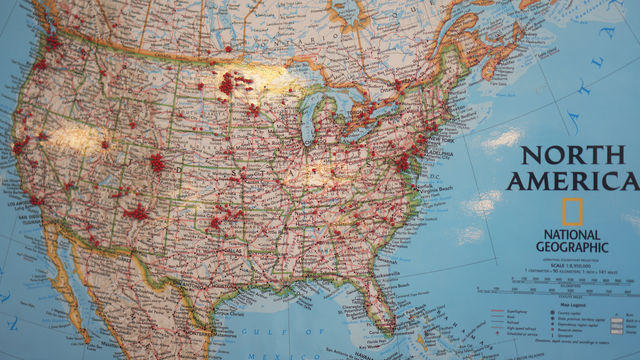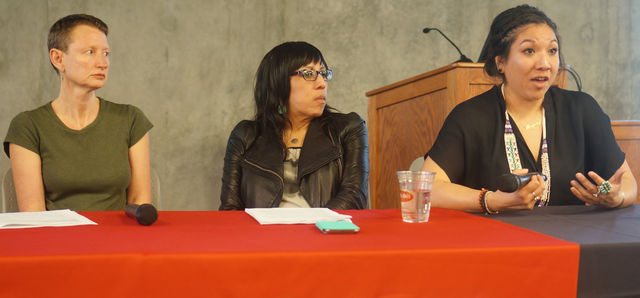Over 1,181 women have been murdered or have gone missing in Canada since 1980.
One of the biggest reasons? They were all aboriginal, native to Canada.
Their deaths and disappearances have left lasting scars on their communities, while the rest of the world, including much of Canada itself, has turned a blind eye. Many crimes against women have taken place along a specific stretch of road — Highway 16 has been renamed the Highway of Tears in memory of the horrors that have occurred there.

The art exhibit “Sing Our Rivers Red,” which was on display in the Okazaki Room of the College of Social Work on Friday as the U’s final event to commemorate Women’s Week, attempts to acknowledge the tragedy of these losses. It is the work of Nani Chacon, a Dine (Navajo) and Chicana artist raised in New Mexico and Arizona of the To dich iini (Bitter Water) clan. Her exhibit is comprised of multiple single earrings, each representing a different woman.
These earrings are unique in their design and beauty, each catching the attention for a different reason and refusing to let go until the viewer has been forced to confront the pain left in the wake by every last one of the murdered or missing. Red, blue, intricate, simple, some inset with pictures of the lost loved one — the earrings are hauntingly beautiful, and it is clear that each was created with care.
The exhibit has been traveling the country since Chacon started it in 2015 in the hopes of bringing attention and resources to resolving the major factors behind many of these deaths and disappearances, such as poor transportation options and a racist law enforcement that has long granted less importance to aboriginal missing persons reports. It is also meant to bring attention to colonial gender violence taking place in the U.S., which has a similar story of neglect by police and the justice system in general when it comes to crimes committed against indigenous women.

A screening of the documentary “Highway of Tears,” in addition to a panel comprised of mainly Native American women, was held in conjunction with the exhibit to allow the message to fully hit home. Panel members emphasized the similarities between violence against Native peoples taking place in Canada with those taking place in the U.S. Many encouraged the attending audience to take a stand and speak out to justice and government authorities, saying that the knowledge that these things are happening is not enough if it is not accompanied by action as well.
As the exhibit’s mission statement explains, “We need to ‘Sing Our Rivers Red’ to remember the missing and murdered and those who are metaphorically drowning in injustices.”


